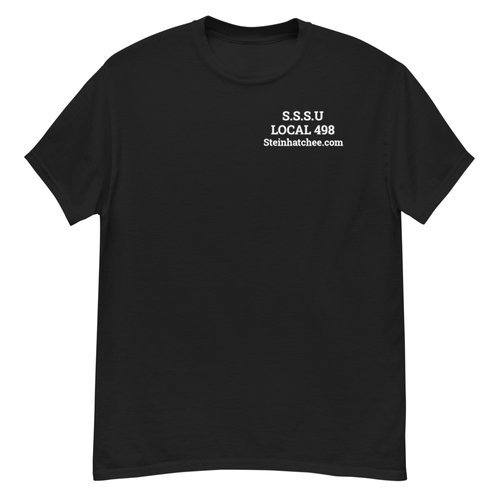Steinhatchee Redfish Fly Fishing - Florida Sportsman
/Here is a nice article about fishing in Steinhatchee by Florida Sportsman Magazine.
Reds are the main players for sight-fishing fly fishers.
By Tommy Thompson
The author depends on Clouser Minnows for both trout and reds.
The first time I fished Steinhatchee, I knew immediately that its shallows stood apart from those I’d sampled elsewhere.
From the mouth of the Steinhatchee River south to the Pepperfish Keys, big, upended rocks litter porous limestone bottom. Oyster and shell bars are not as common as they are to the south, from Horseshoe Beach to the Suwannee River. Continuous grassflats extend for more than a mile offshore.
If you sight fish with a fly rod, you can certainly do it on this unique stretch of Florida’s Gulf coast. The jagged, marshy shoreline is scrubbed clean by good tidal flow and protected by distance from the muddy outflow of the Suwannee.
From the mouth of Steinhatchee River, the shoreline of Deadman Bay begins a westward swing toward Rock Point and Dallus Creek. This is a natural catch basin for baitfish, redfish and surprisingly big seatrout. The town has become an angler-friendly destination within the last few years.
The Steinhatchee River channel is well-marked. To clear the extreme shallows on either side, you’ll have to run out quite a ways to hang a left and head south to the best flats. If you have a shallow-draft skiff, with a moderate tide and calm winds, you can easily run due south from marker No. 9, but on the lowest tides you’ll need to run as far out as No. 5 before you make your turn. And once you do, you find yourself nearly two miles off the coast, but don’t worry—the shallows you’re heading to extend several miles into the Gulf of Mexico in places, so don’t make the big mistake of swinging back to shore at full tilt.
Hard bottom here claims many props, so your approach takes some patience. Once I’m directly offshore of the stretch of flats I want to fish, I come in with my motor trimmed up, come off plane, idle in a ways, and then shut down, perhaps drop the trolling motor to get even shallower, then grab the pushpole and start my hunt.
I like easterly winds here, for the sake of clean water. Strong easterlies are fine for fly fishing close to shore, but make the run south difficult, especially while crossing the deeper sloughs on the way to the fishing grounds. Moderate westerly winds, swinging from south to north, are a good reason to get out the spinning gear and rainsuits. Strong westerlies are reason to stay home, to be frank, if you have your heart set on fly fishing.
If redfish are your goal, understand that on a low tide, you may find shin-deep water a mile offshore in places. At that phase, reds may be tailing or pushing wakes, but also may hold in two to four feet, schooled up where you find good potholes in grassy bottom. That’s another good reason not to roar in under power until the last second. You may have just run over redfish in the process. Once the tide floods, the shallowest water smack against the grassy shorelines, and the creekmouths, are the places to look for fish. And it is those creekmouths that can hold some eye-popping trout that have made a comeback in this region.
Seatrout can be taken blind-casting streamers or poppers, or by sight casting on occasion.
So, where to start? Those who regularly fly fish this area have favorite spots, many smaller than an urban backyard, but there are things to look for to get you off on the right foot.
Fellow fly and light-tackle guide Sam LeNeave, of Gainesville, keeps a house at Steinhatchee and launches at Sea Hag Marina (directly across the river from the public ramp), near the mouth of the river. He is quick to say that sight fishing for reds is a low-tide deal.
“An early morning with light wind and a low incoming tide, preferably a spring tide, is best,” said LeNeave. “The top tide phase for me has been the last two hours of the ebb through the first of the riser. Once the water gets high, I switch gears and pole into the spartina shorelines, particularly at mouths of creeks.” At high tide, blind-casting with fast-sinking flies is the rule.
LeNeave and I agree that a good sight fishing day out of Steinhatchee means around 20 shots with a fly, and three to five hookups. For that reason, I would suggest blind casting to likely cover while waiting for fish to show.
Flood tides allow poling anglers to stalk reds on grassy shorelines and at creekmouths.
“Don’t expect tailers to outnumber cruising fish in this area,” said LeNeave. On soft bottom in water over two feet deep, mudding fish are possible. Sometimes fish will “float,” or mill about at the surface with tail tips exposed. Long casts are needed in this situation, particularly on flat-calm days. A black-and-gold or a burnt orange-and-gold Clouser Minnow are LeNeave’s top redfish flies. Otherwise, a gold DuPree Spoonfly will take fish, and a small gold popper will score on both trout and reds.
There is ideal redfish bottom off of Rocky, Sink, Buck and Cow creeks, all south of Steinhatchee. There, you’ll want to pole over rocky patches surrounded by turtlegrass and the long “rock grass” that reaches the surface on lower tides. Quietly pole around these patches and sloughs and look for solo reds or small schools. Trout are harder to spot, and you’ll surely spook a few in the process. Make a mental note of what baits you see—mullet and pinfish indicate that predators are there, too. Take note, too, of the tidal stage at which you see gamefish or bait. My experience is that the reds move out from the shore with 12 to 18 inches of water on the falling tide. I don’t think they’re very comfortable with less than a foot of water over their backs.
Trout, like the big singles you will find close to shore, seem to prefer the same depths. On flood tides—particularly during the spring and fall—reds and trout get right up to the shoreline and the small rock and oyster bars near the creekmouths. Seasonally, you’ll tangle with tailing reds on the shallow flats on the falling tide on cold winter mornings, while summer high tides provide fly shots at reds pushing bait schools along shore.
Many fly rodders who fish here consider it to be 8-weight territory. Many days start calm and finish with a seabreeze, making moderate-distance casts a chore. I generally shift to a 9-weight outfit when the winds pick up, and when casting the heavier, sinking flies that are called for when fish are a bit deeper. Whatever your rod weight preference, just pick one that allows you to load up well for quick, short casts at reds that pop up close to the boat.
Seatrout are masters of camouflage, and that doesn’t change here. Many times you’ll only see a puff of mud from a spooked trout in clear water, and it’s generally (or always) on the outer edge of your accurate casting range. For this reason, to have a real shot at trout on fly, I recommend that you spend a few minutes where you spook a few, by quietly slipping over a small anchor. It’s sometimes tough to find soft spots in which to stake out. Make a series of long casts to holes and patchy rock and grass where a trout can blend in. Make a stealthy presentation, and you just might take a close look at one of those 6-pound trout that are again making Steinhatchee famous.
I recommend a floating fly line with anything from a 5- to 9-foot leader, depending on fly pattern, depth and wind. I always keep another rig on board with a sinking line or a shooting head setup. The sinking line setup will come in handy when you come across those 4- to 6-foot holes that can house a big trout or redfish.
Boaters should give rocky flats a wide berth while running the coast.
As for flies, I feel that brighter colors work better on this coast. Bright Clouser Minnows, spoonflies, Rattle Rousers, standard Bendbacks and Deceivers are great for reds on the flats and for blind casting to trout. A handful of Redfish Candy flies, including white, yellow and pink (for trout), is a must for these waters, as well. During summer, reds chase baitfish tight along the shorelines, and will take a popper or a deerhair diver, but it can be tough for mere mortals to cast quickly and accurately at moving fish.
No discussion of fly fishing at Steinhatchee would be complete without mentioning the potential of the area between the Steinhatchee mouth and Dallus Creek to the north. While the water is not as clear as that over the flats to the south, as mentioned earlier, sightfishing possibilities exist. The greatest disadvantage to fly fishing Steinhatchee is the inevitable wind combined with the fact that the topography is low, and there is no high shoreline cover, thus few lees in which to hide. The southern creeks are short and shallow and there are only a few islands. The northern end of Deadman Bay is more protected from wind than the straight, low shoreline to the south. Try wading the shell bars near marker 13, and the short creeks behind the spoil banks adjacent to marker 19 if the wind beats you up down south. Dallus Creek, like Rocky Creek south of Steinhatchee, has a primitive boat ramp that’s fine for canoes, kayaks and smaller skiffs. Be prepared to do lots of blind casting at this end of the bay as your sightfishing options are limited.
Except during the most extreme cold snaps, redfish and trout are not the only flyfishing options. As the water approaches 72 degrees in the spring, expect to see schools of small baitfish appear in deeper water, followed by the first Spanish mackerel of the season. As summer starts, the mackerel are joined by ladyfish and jack crevalle—not great tablefare, but some fantastic action on a fly rod. A good place to look for these is near marker 1 and on the deeper flats to the north, near Dallus Creek. Just follow the birds. Also, don’t forget your 12-weight outfit during the summer. I carry one at all times in the event that I find a school of tarpon moving northward in early summer, or even a cobia on the flats or around the river’s channel markers. Big Deceivers in yellow-and-red make good tarpon choices and there’s nothing like a felt-bodied eel imitation for a hungry cobia.
To get to Steinhatchee, take US19, south of Perry; it’s just over 90 minutes from I-75 at Gainesville. Steinhatchee has first-rate facilities for any budget, and warm hospitality is the result of a sleepy commercial fishing village intentionally turning itself into a sportfishing destination over the last few years. FS








